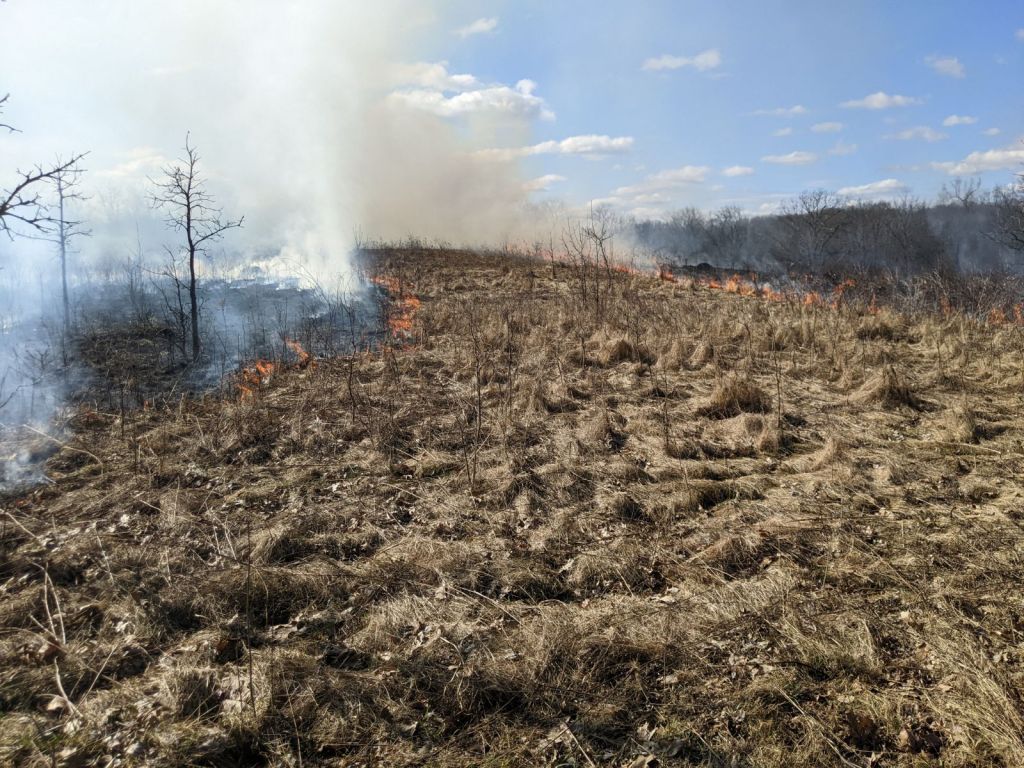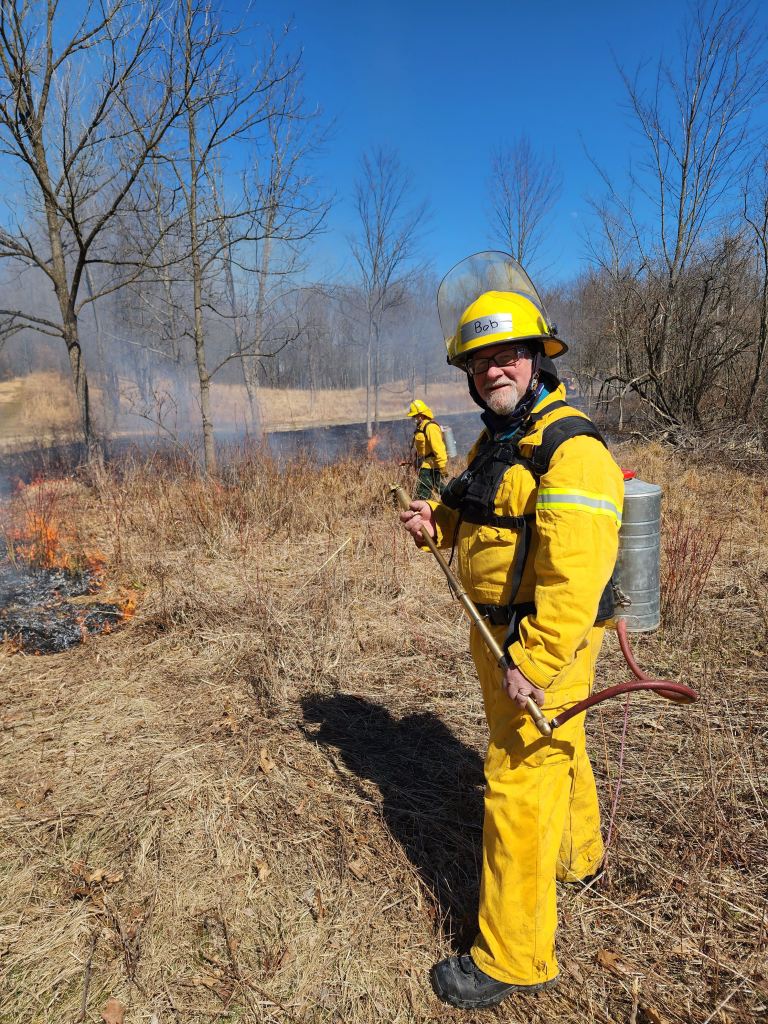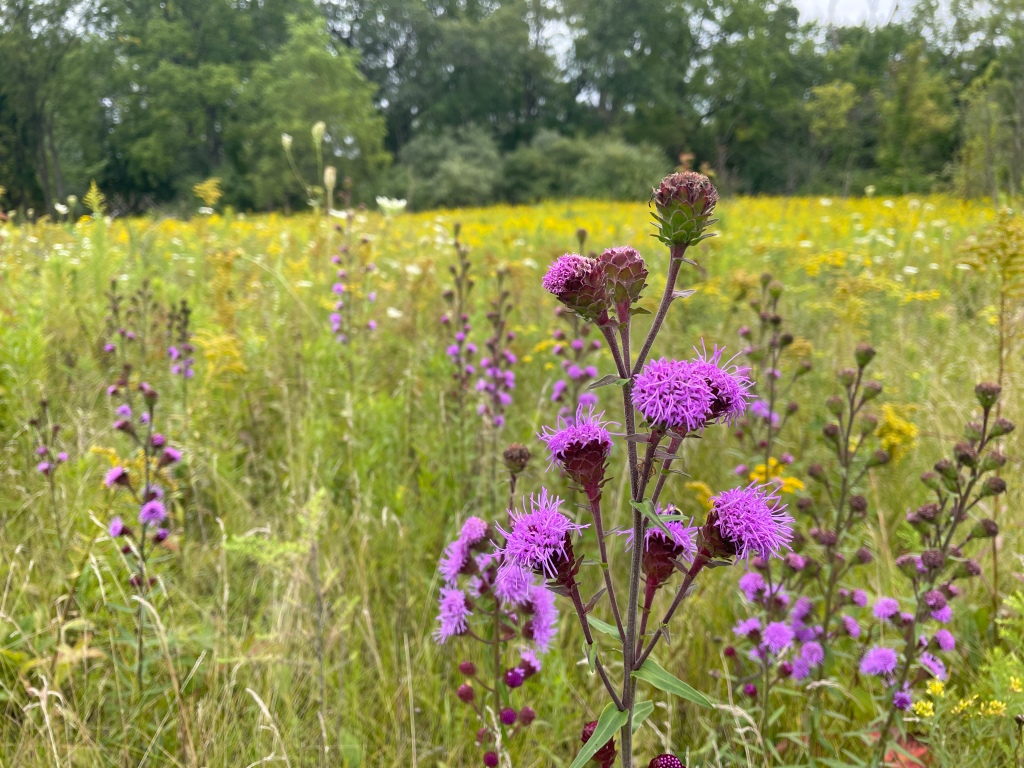The text of this post was originally published in the Summer 2024 Parks & Recreation Newsletter (pg 19). I added details to the text and added lots of photos to make it more engaging!
If you’ve visited our parks recently, you likely noticed areas managed with prescribed fire at Bear Creek Nature Park, Gallagher Creek Park, along the Paint Creek Trail, and other places. We use controlled burns in our Oakland Township parks to manage high-quality natural areas, and to help improve degraded habitat.

We’re working to bring more native wildflowers and grasses back to the parks. Our butterflies and bees need diversity: blooms throughout the growing season, different types of flowers, and host plants for their young to feed on, and fire helps us grow diverse, healthy habitat.

Historically, fire was a common feature of the southeast Michigan landscape. Native American people used fire extensively to manage the landscape, which was adapted to fire and rich with a diversity of plant and animal life. We often say that our prairies and oak woodlands are “fire dependent.” Without fire they can’t survive! In these remaining high-quality prairies and woodlands, deep shade from encroaching trees and shrubs and accumulated thatch and leaf litter slowly choke out plants adapted to dappled sunlight. By reintroducing fire, we are reintroducing a natural process.


Fire promotes a healthy plant community by setting back many invasive shrubs like glossy buckthorn and autumn olive that would otherwise take over. The blackened soil surface after a burn absorbs the sun’s rays, which extends the growing season by raising the ground temperature. Fire removes built-up thatch, helping low-stature plants like early buttercup (Ranunculus fasicularis) and wood betony (Pedicularis canadensis) to persist, and allowing seeds to germinate. It’s amazing to visit periodically after a burn and witness the new plant growth and abundant flowers the summer after a prescribed burn!


Prescribed burns are part of the restoration process, not one-time events. For each burn we set specific objectives: controlling invasive shrubs, removing thatch, and maintaining native plant gardens are some common goals. We plan burn timing, weather conditions, and frequency so that we meet those objectives to work toward our restoration goals at that site. We plan follow-up work after each burn, which often includes spreading seed, treating invasive shrubs as they resprout, scheduling monitoring visits, and planning the next prescribed burn if appropriate for the site.

For example, to boost the blooms in the fields at Bear Creek Nature Park, we use frequent, careful prescribed burning paired with interseeding a diversity of native prairie and savanna plant species. Folks in Wisconsin have been using this technique with great results. (Check out this talk by Rich Henderson, retired ecologist with Wisconsin DNR and a member of The Prairie Enthusiasts).
First, fire removes accumulated thatch to prepare the field for seeding, and top kills invasive shrubs like autumn olive, callery pear, and glossy buckthorn.


Then we spread native wildflower, grass, and sedge seed that we collected right here in Oakland Township. (You’re invited to our seed collecting workdays each October!) We design seed mixes for different areas; wet or dry, sunny or shaded are a few of the variables we consider.


The new seedlings take three to five years to put down roots and start blooming, so we’re just starting to see wildflowers that we seeded a few years ago become more abundant. Other native plants like Michigan lily, butterfly milkweed, and smooth aster that were already growing at Bear Creek naturally are spreading and becoming more abundant.


Stewardship staff and volunteers carefully control invasive shrubs to prevent them from returning as quickly.

Volunteers help with every step of the restoration process, so you’re invited to join us! You can learn more about how we use prescribed fire at https://oaklandnaturalareas.com/prescribed-fire/.

